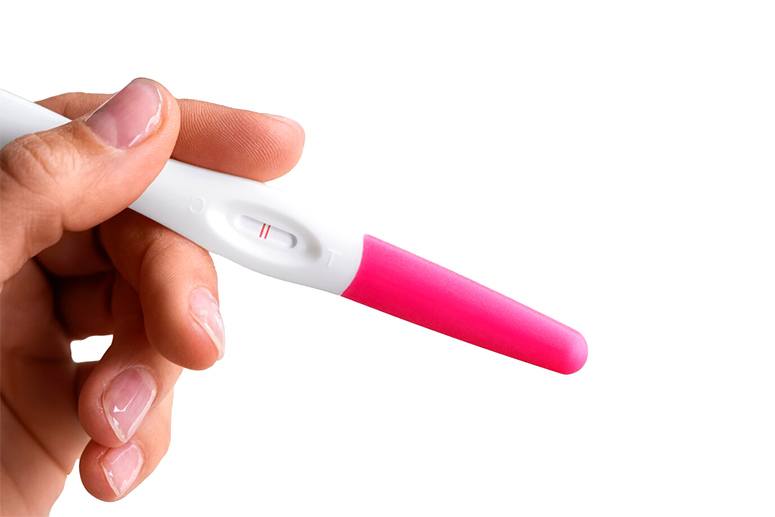Contents
Understanding the menstrual cycle is essential for reproductive health and family planning. Many individuals are curious about the possibility of conception occurring during menstruation, leading to the question – what are the odds of getting pregnant on your period?
This discussion will analyze the phases of the menstrual cycle, examine the likelihood of becoming pregnant while menstruating, and identify the various factors that may influence these probabilities.
Additionally, effective strategies for preventing pregnancy during this period, as well as the appropriate actions to take if pregnancy is suspected, will be addressed.
This examination aims to provide valuable insights into these important topics.
Understanding menstrual cycles
Understanding menstrual cycles is essential for comprehending various aspects of reproductive health, including the hormonal fluctuations and phases that women experience throughout their cycles.
A typical menstrual cycle comprises several phases, including the follicular phase, ovulatory phase, and luteal phase, each of which influences menstrual flow, ovulation timing, and overall menstrual health.
Women frequently track their cycles to manage period symptoms more effectively and to predict fertile windows, which can be critical for family planning and awareness of fertility.
By familiarizing themselves with the menstrual cycle, individuals can attain a better understanding of their reproductive systems and menstrual health.
What is a menstrual cycle?
A menstrual cycle is a series of natural changes in hormone levels and reproductive system processes that prepare the body for potential pregnancy each month.
This intricate cycle typically lasts approximately 28 days, although it may vary among individuals, and plays a crucial role in reproductive health.
The menstrual cycle is regulated by a complex interplay of hormones such as estrogen and progesterone, which govern the functioning of the ovaries and the thickening of the uterine lining.
As the cycle progresses, these hormonal fluctuations facilitate the maturation of eggs within the ovaries and determine the timing of ovulation, marking critical windows for conception.
Understanding this cycle is essential, as it not only influences fertility but also impacts the overall menstrual health of an individual.
What happens during a menstrual cycle?
During a menstrual cycle, various physiological processes occur, including ovulation, the shedding of the uterine lining, and the hormonal fluctuations that regulate these changes.
Each phase plays a crucial role in reproductive health, commencing with the menstrual phase, during which the body eliminates the thickened lining of the uterus, accompanied by hormonal declines that signal the initiation of a new cycle.
Subsequently, the follicular phase ensues, wherein increasing estrogen levels stimulate the maturation of follicles in the ovaries in preparation for ovulation.
At the midpoint of the cycle, ovulation occurs due to a surge in luteinizing hormone, resulting in the release of a mature egg into the fallopian tube, thus becoming available for potential fertilization.
The luteal phase follows, characterized by the secretion of progesterone, which is essential for sustaining any potential pregnancy.
This phase also influences mood and physical symptoms as the cycle draws to a close. A thorough understanding of these phases and their implications for hormonal balance can yield valuable insights into overall health and fertility.
Can you get pregnant during your period?

The possibility of conceiving during menstruation is a common inquiry among women, as a comprehensive understanding of ovulation timing and the fertile window is essential for effective family planning and fertility awareness.
While the likelihood of conception during this period is generally low, it is not entirely absent, due to the variability in menstrual cycle lengths and the lifespan of sperm.
Awareness of one’s cycle length can aid in identifying safe days and assessing the overall chances of pregnancy, particularly for those who experience irregular periods or engage in unprotected intercourse.
Therefore, understanding this aspect is crucial for effective management of reproductive health.
What are the odds of getting pregnant on your period?
The likelihood of conceiving during menstruation is influenced by several factors, including the timing of ovulation and the viability of sperm within the reproductive tract.
To gain a clearer understanding of this phenomenon, it is important to recognize that ovulation typically occurs approximately two weeks prior to the onset of menstruation in a standard 28-day cycle.
Therefore, while the probability of conception during menstruation is generally low, it is not entirely impossible.
Sperm can remain viable in the female reproductive system for up to five days – consequently, if ovulation occurs shortly after the conclusion of menstruation, there is a potential for fertilization.
Furthermore, irregular menstrual cycles may complicate the timing of ovulation, underscoring the necessity for individuals to meticulously track their cycles in order to enhance their comprehension of fertile windows.
Factors that affect pregnancy during period
Several factors can significantly influence the likelihood of pregnancy occurring during a woman’s menstrual period, including the length of the menstrual cycle, the timing of ovulation, and the survival rates of sperm within the female reproductive system.
Understanding these elements is essential for effective family planning and fertility awareness.
Women with shorter menstrual cycles may ovulate soon after their period concludes, thereby increasing the chances of conception if they engage in unprotected sexual intercourse.
Furthermore, irregular menstrual cycles can complicate these factors, highlighting the importance of accurately tracking menstrual cycles.
1. Length of menstrual cycle
The length of a menstrual cycle, typically ranging from 21 to 35 days, is a critical factor in determining the timing of ovulation and overall chances of conception.
Understanding how cycle length affects the timing of ovulation can significantly enhance fertility awareness, enabling individuals to identify their most fertile days.
For individuals with shorter cycles, ovulation may occur earlier than the average midpoint, while those with longer cycles may experience later ovulation.
This variability directly influences the conception window, underscoring the importance of monitoring individual cycles.
Recognizing the unique patterns in cycle length not only aids in timing intercourse for optimal fertility but also give the power tos individuals to make informed decisions regarding their reproductive health.
2. Sperm survival
Sperm can survive within the female reproductive tract for up to five days, thereby influencing the likelihood of conception even when sexual intercourse occurs during menstruation.
This remarkable lifespan indicates that if ejaculation happens close to the time of ovulation, the probability of fertilization increases significantly, even if intercourse takes place during the menstrual period.
A comprehensive understanding of menstrual cycles is essential, as ovulation typically occurs approximately two weeks prior to the onset of the next period.
Therefore, engaging in sexual activity several days before ovulation can result in viable sperm being present at the time of egg release.
Consequently, when assessing the possibilities of pregnancy, it is important to acknowledge how the longevity of sperm interacts with the fluctuations of the menstrual cycle, creating a broader window for potential conception than many individuals may initially realize.
3. Ovulation timing
The timing of ovulation is critical for understanding the likelihood of conception, as it delineates the fertile window during which a woman is most capable of becoming pregnant.
This understanding holds considerable significance not only for individuals actively seeking to conceive but also for gaining insights into overall reproductive health.
By monitoring the menstrual cycle and recognizing the signs of ovulation, individuals can make informed decisions regarding family planning and fertility management.
Awareness of ovulation timing aids in predicting menstrual irregularities and may indicate potential health concerns.
Whether through tracking basal body temperature or observing changes in cervical mucus, the ability to accurately identify ovulation enhances a woman’s understanding of her reproductive cycle.
This knowledge not only increases her chances of successful conception but also give the power tos her with greater insight into her body’s functions.
4. Irregular periods
Irregular menstrual periods can present significant challenges for women attempting to conceive, as they complicate the prediction of ovulation and heighten the risk of pregnancy occurring during menstruation.
This unpredictability can hinder individuals from accurately tracking their menstrual cycles and comprehending their fertile windows.
Without a clear understanding of the timing of ovulation, coordinating intercourse becomes increasingly difficult, often resulting in frustration and uncertainty.
Many individuals resort to various fertility tracking methods and applications in an attempt to manage their cycles – however, the effectiveness of these tools can be compromised by irregular patterns.
As a result, women may experience heightened anxiety regarding family planning and potential obstacles in achieving pregnancy.
It is essential for them to seek guidance from healthcare professionals to obtain personalized strategies and support tailored to their specific circumstances.
How to prevent pregnancy during period

Preventing pregnancy during menstruation necessitates a proactive approach that involves a comprehensive understanding of the menstrual cycle and the implementation of effective birth control methods to ensure safe sexual practices.
Many women utilize contraceptive methods, including hormonal contraception and barrier techniques, to reduce the risk of unintended pregnancy.
Furthermore, tracking the menstrual cycle can aid in identifying safe days and optimizing family planning strategies, thereby enhancing awareness of fertility and reproductive health.
Comprehensive education regarding these options is essential for effective reproductive management.
1. Use birth control
Utilizing reliable birth control methods is one of the most effective strategies for preventing pregnancy during menstruation. Many people wonder, “What are the odds of getting pregnant on your period?”
Along with the well-established barrier methods, such as condoms, individuals may consider a range of options, particularly hormonal contraception.
This category encompasses various forms, including birth control pills, patches, injections, and intrauterine devices (IUDs), each designed to regulate or inhibit ovulation and modify the menstrual cycle.
When used correctly, hormonal methods can achieve effectiveness rates exceeding 99%.
It is essential to understand the different available options, as these methods not only facilitate pregnancy prevention but also address various reproductive health concerns.
Additionally, examining the advantages and potential side effects of these methods equips individuals to make informed decisions that align with their specific needs.
2. Track your menstrual cycle
Tracking the menstrual cycle can yield valuable insights into fertility patterns, thereby helping withdividuals in identifying safe periods to prevent pregnancy.
This practice is crucial for anyone seeking to enhance their understanding of their body and exercise control over their reproductive health.
By documenting changes in mood, symptoms, and physical sensations throughout the month, individuals can develop a clearer understanding of their unique cycle.
This awareness give the power tos individuals to effectively plan for conception or to prevent it as needed.
Moreover, recognizing patterns may highlight potential irregularities that could necessitate a conversation with a healthcare provider, ultimately promoting overall well-being and facilitating informed decisions regarding family planning.
3. Use barrier methods
Barrier methods, such as condoms, are effective in preventing pregnancy and providing protection against sexually transmitted infections.
These methods establish a physical barrier that minimizes the risk of unintended pregnancies while also serving as a primary defense against pathogens that can cause serious health complications. If you’re considering the question, “What are the odds of getting pregnant on your period?” barrier methods offer a reliable form of protection.
By utilizing these protective devices, individuals can engage in sexual activities with greater peace of mind, knowing they are safeguarding both their reproductive health and overall well-being.
Barrier methods are widely available, easy to use, and do not require a prescription, making them a convenient option for couples.
This dual benefit give the power tos individuals to take control of their sexual health, reducing anxiety and enhancing enjoyment in intimate relationships.
4. Avoid unprotected sex
Avoiding unprotected sexual activity during the menstrual cycle can significantly diminish the risk of unintended pregnancy. This is primarily due to the generally lower chances of conception during this period.
However, it is important to recognize that while the probability of pregnancy may decrease, it does not entirely eliminate the associated risk.
Sperm can survive within the female reproductive tract for several days, and menstrual cycles can vary, complicating the accurate prediction of ovulation.
Consequently, the utilization of effective contraceptive methods is essential for maintaining sexual health and preventing unwanted pregnancies.
By employing options such as condoms, birth control pills, or long-acting reversible contraceptives, individuals can take proactive measures to protect against unintended consequences, ensuring a more responsible and fulfilling sexual experience.
What to do if you think you may be pregnant

If there is a suspicion of pregnancy, it is essential to take prompt action by utilizing a pregnancy test and consulting with a healthcare provider for further evaluation and guidance.
Early signs of pregnancy can often be subtle – therefore, it is important to be attentive to missed periods or other related symptoms.
Following up with a physician can provide clarity regarding available options and potential pregnancy complications, thereby ensuring that informed decisions are made concerning reproductive health.
1. Take a pregnancy test
Taking a pregnancy test is a straightforward and effective method for determining pregnancy, particularly in the case of a missed period or the manifestation of early pregnancy signs.
These tests operate by detecting the presence of the hormone human chorionic gonadotropin (hCG) in urine, which is produced shortly after a fertilized egg implants in the uterine lining.
For optimal reliability, it is advisable to wait until at least the first day of a missed period, as this allows sufficient time for hCG levels to rise to detectable levels. Testing prematurely may result in false negatives, which can lead to unnecessary confusion or anxiety.
To enhance the accuracy of the test, it is often recommended to use the first urine of the morning, when hCG concentration is at its highest.
Understanding these factors not only increases the likelihood of obtaining accurate results but also provides peace of mind during this significant time.
2. Consult with a doctor
Consulting with a physician is essential if pregnancy is suspected, as they are equipped to provide critical guidance and address concerns regarding potential pregnancy complications.
A healthcare provider can assist in confirming the pregnancy through various tests and assessments, which is a vital step in understanding the subsequent phases of prenatal care.
It is important to engage in open discussions regarding any observed symptoms, such as unusual fatigue, morning sickness, or mood changes, as these can offer valuable insights into overall health status.
Individuals should also inquire about dietary requirements, vitamins such as folic acid, and necessary lifestyle modifications.
Additionally, ensuring a comprehensive understanding of warning signs that may indicate complications is invaluable, ultimately contributing to a healthier pregnancy experience.
3. Consider your pptions
Considering the available options in the event of a suspected pregnancy is essential for effective family planning and the management of reproductive health.
It is important to explore a variety of reproductive choices, enabling individuals to assess the potential for continuing the pregnancy or considering alternatives, such as adoption or abortion.
Each option carries its own emotional, physical, and financial implications, which can significantly affect an individual’s life. By gaining a comprehensive understanding of these choices, women and their partners can make well-informed decisions that align with their values and personal circumstances.
Engaging in open discussions with healthcare providers can further elucidate these reproductive options, give the power toing individuals to navigate this critical moment with confidence and support.
Scroll down the page to find our FAQ addressing the probability of pregnancy during your period.
Journey into the captivating world of probabilities and notable events. Expand your horizons and feed your curiosity with our engaging articles at WhatAreTheOddsOf.NET.



